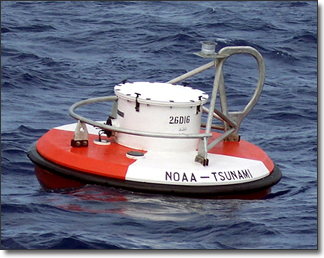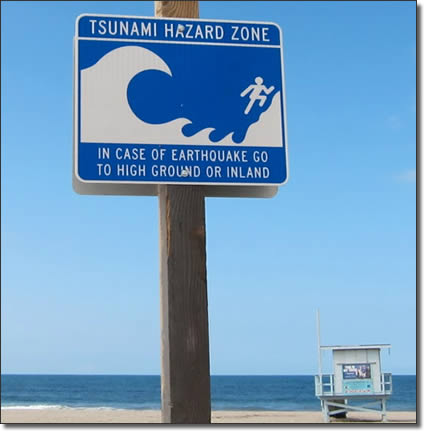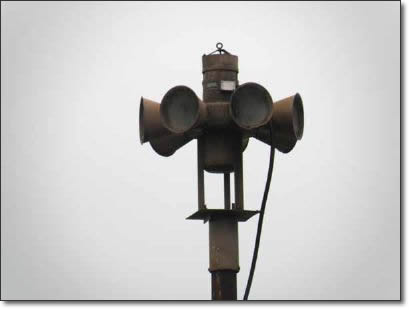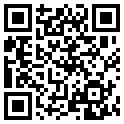Tsunamis: Warning Signs
Signs in the deep sea
As we have seen in the previous pages, in the deep sea the height of a tsunami from trough to crest can be only about 3 feet tall (1 meter) because the bulk of a tsunami lies beneath the sea surface. As a consequence, tsunamis are hard to detect when they travel across the open ocean and they can arrive completely unexpectedly.
A network of deep-sea sensors would be needed worldwide to detect tsunami movement within the ocean, but that is not easy to implement. Creating the monitoring and communications infrastructure needed to issue timely warnings is a huge task presenting considerable problems, particularly for the poorest areas of the world.

But even with the latest technology and despite a lot of seismic data available, it is equally hard to predict with accuracy when and where a tsunami will hit land and how big it will be. All that tsunami warning centers worldwide can do is to send out an alert to all communities concerned along the coast within few minutes after the detection of a magnitude 7.0 or greater earthquake near or under the ocean.
After receiving a tsunami warning, local authorities must decide what action has to be taken and provide a clear guidance on evacuation procedures. Warning for local tsunamis gives very little time for evacuation.
Modern warning systems are precise but unfortunately cannot be fast enough for warning of a quake close to the shoreline.
Signs along the shoreline
Fortunately, a few natural warning signs can help you understand that a tsunami is approaching and they can be easily recognized. They include:
- Strong ground shaking from an earthquake: if you are on the coast and there is an earthquake, it may have caused a tsunami, so escape immediately to higher ground or inland, avoiding river valleys;
- Unusual sea-level fluctuations: a noticeable rapid rise or fall in coastal waters is a sign that there may be a tsunami approaching. If you see the water recede quickly and unexpectedly from a beach exposing the ocean floor (the so-called drawback) or a sudden rise of the sea level, escape immediately to higher ground or inland, avoiding river valleys;
- Abnormally huge wave: the first wave in a tsunami wave train is usually not the largest, so if you see an abnormally huge wave, even bigger waves could be coming soon. Run immediately to higher ground or inland, avoiding river valleys;
- Loud ocean roar: if you hear a roaring sound offshore, similar to that of a train or jet aircraft, a tsunami may be approaching, so escape immediately to higher ground or inland, avoiding river valleys.

If you experience any of the phenomena described above, do not wait for official evacuation orders. Immediately leave low-lying coastal areas and move to higher ground or inland, avoiding river valleys. Do not return to low-lying land after a tsunami has hit the coast because other waves are likely to follow the first one and each wave can last up to 30 minutes. The danger may last for many hours and, in some cases, more than 24 hours.
Man-made Tsunami Warning signs and sirens have been placed along the roads of many beaches worldwide to inform the public about the potential risk; these signs should not be ignored and immediate action should be taken if any of the natural signs described above occurs. Response timeliness may save up many lives.

If you would like to know more about what to do in the event of tsunami warnings, we recommend this reading at Ess.Washington.edu
For You and Your Loved Ones
With preparedness and safety measures, protect yourself and your family from earthquake risks.
Always good to prepare for an earthquake
Earthquake Warnings are a Game Changer
Stay protected, anytime, anywhere

HAPPY CLIENTS
ALERTS DELIVERED SINCE 2011

